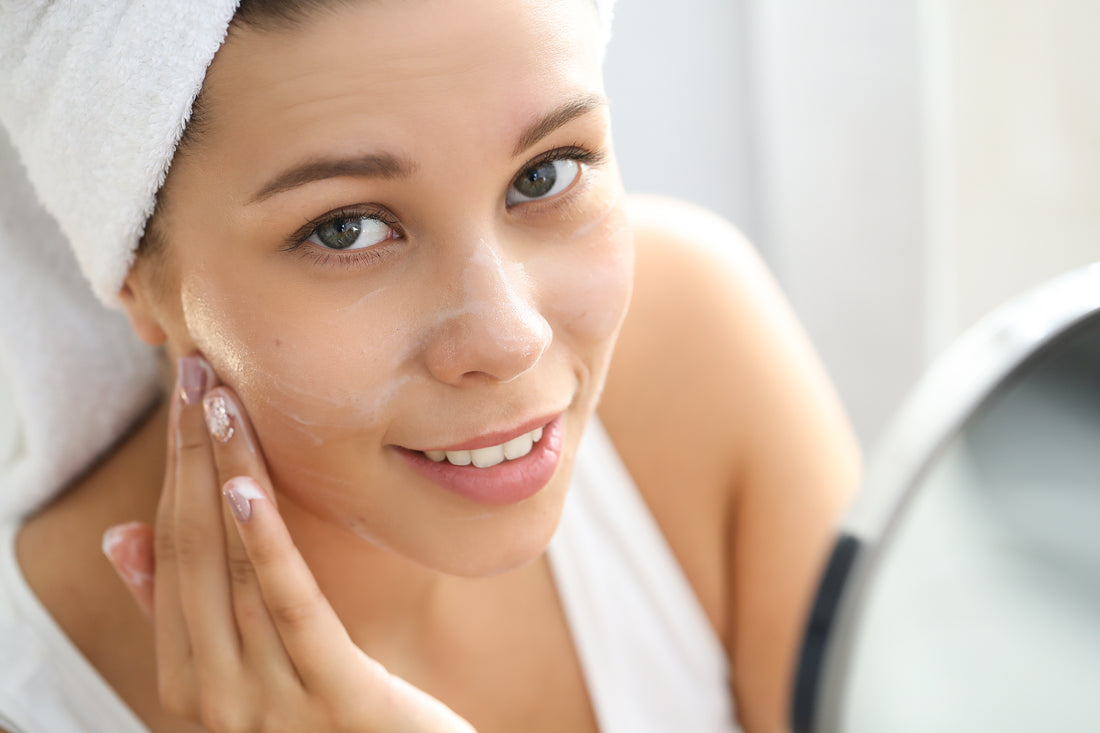What To Do About Dry Skin in Winter

Dry skin occurs when skin doesn't retain sufficient moisture — for example, because of frequent bathing, use of harsh soaps, aging, or certain medical conditions.
Wintertime poses a special problem because the humidity is low both outdoors and indoors, and the water content of the epidermis (the outermost layer of skin) tends to reflect the level of humidity around it.
Fortunately, there are many simple and inexpensive things you can do to relieve winter dry skin, also known as winter itch or winter xerosis.
Keeping Moisture in the Skin
Think of the epidermal skin cells as an arrangement of roof shingles held together by a lipid-rich "glue" that keeps the skin cells flat, smooth, and in place. (See "Anatomy of the skin.")
Water loss accelerates when the glue is loosened by sun damage, over-cleansing, scrubbing, or underlying medical conditions — or by winter's low humidity and the drying effects of indoor heat.
The result is roughness, flaking, itching, cracking, and sometimes a burning sensation.
Dry skin becomes much more common with age; at least 75% of people over age 64 have dry skin. Often it's the cumulative effect of sun exposure: sun damage results in thinner skin that doesn't retain moisture.
The production of natural oils in the skin also slows with age; in women, this may be partly a result of the postmenopausal drop in hormones that stimulate oil and sweat glands.
The most vulnerable areas are those that have fewer sebaceous (or oil) glands, such as the arms, legs, hands, and middle of the upper back. Substances in the dermis (below the epidermis) that attract and bind water molecules also decrease with age.
Dry skin is usually not a serious health problem, but it can produce serious complications, such as chronic eczema (red patches) or bleeding from fissures that have become deep enough to disrupt capillaries in the dermis.
Another possible complication is a secondary bacterial infection (redness, swelling, and pus), which may require antibiotics. (Rarely, dry skin is associated with allergy.)
Consult your clinician if you notice any of these symptoms or if measures you take at home provide no relief.
For severe dry skin, your clinician may prescribe a cream containing lactic acid, urea, or corticosteroids. She or he may also want to run some tests to rule out medical conditions that can cause dry skin, including hypothyroidism, diabetes, lymphoma, kidney disease, liver disease, psoriasis, and atopic dermatitis.
What You Can Do Combat Dry Skin?
Here are some ways to combat dry skin that are effective if practiced consistently:
- Use a humidifier in the winter. Set it to around 60%, a level that should be sufficient to replenish the top layer of the epidermis.
- Limit yourself to one 5- to 10-minute bath or shower daily. If you bathe more than that, you may strip away much of the skin's oily layer and cause it to lose moisture.
- Use lukewarm water rather than hot water, which can wash away natural oils.
- Minimize your use of soaps; if necessary, choose moisturizing preparations or consider soap-free cleansers.
- Steer clear of deodorant soaps, perfumed soaps, and alcohol products, which can strip away natural oils.
- Bath oils can be helpful, but use them with caution: they can make the tub slippery.
- Apply moisturizer immediately after bathing or after washing your hands. This helps plug the spaces between your skin cells and seal in moisture while your skin is still damp.
- To reduce the greasy feel of petroleum jelly and thick creams, rub a small amount in your hands, and then rub it over the affected areas until neither your hands nor the affected areas feel greasy.
- Never, ever scratch. Most of the time, a moisturizer can control the itch. You can also use a cold pack or compress to relieve itchy spots.
- Use sunscreen in the winter as well as the summer to prevent photoaging.
- When shaving, use a shaving cream or gel and leave it on your skin for several minutes before starting.
- Use fragrance-free laundry detergents and avoid fabric softeners.
- Avoid wearing wool and other fabrics that can irritate the skin.
